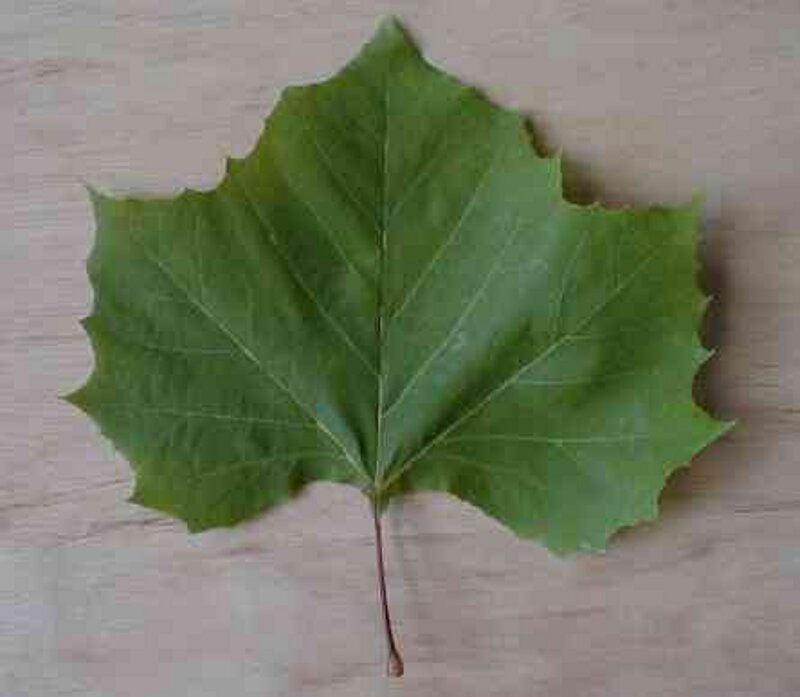
Plane trees of London
Platanus occidentalis |

This species is rarely seen in Britain though it can generally survive the British weather. It is winter hardy, but can be affected by anthracnose, made worse by cold weather and frost damage in spring. It also does not have the same statuesque form that many of the forms of the London Plane have. It has been regularly planted in Britain since the 16th century, but is rarely found.
Its native range covers much of the eastern United States, where it forms the largest broadleaf tree, with trunks of massive girth. It is a fast growing tree of river valleys and damp places, of fairly coarse appearance and with relatively weak and easily broken wood. The common name for this tree is sycamore in the United States, while in Britain it is usually called American plane or Occidental plane.
It is not much grown even in its native range, the London plane being preferred as an ornamental. Its faults as an ornamental tree include weak wood and a susceptibility to anthracnose. It is sometimes planted for timber, and sometimes as a biomass crop in North America. The wood is used on a small scale for furniture and veneering.
Further accounts of the tree can be found at several sites on the web, mostly dealing with native plants of North America.
It is a parent of the hybrid London plane, and some forms of the London plane can be seen to be quite close to it. In particular, the clone or clones Platanus x acerifolia 'Pyramidalis' approaches it in leaf shape and the number of fruits.
In autumn 2022, there was at least one medium sized specimen at Kew Gardens, in apparent good health with little indication of problems. perhaps due to the hot and dry summer. There was evidence of branch breakages or perhaps dieback it its crown. Others trees of comparable size have been seen in the past at other botanic gardens across Britain.
Return to index page
4-October-2022